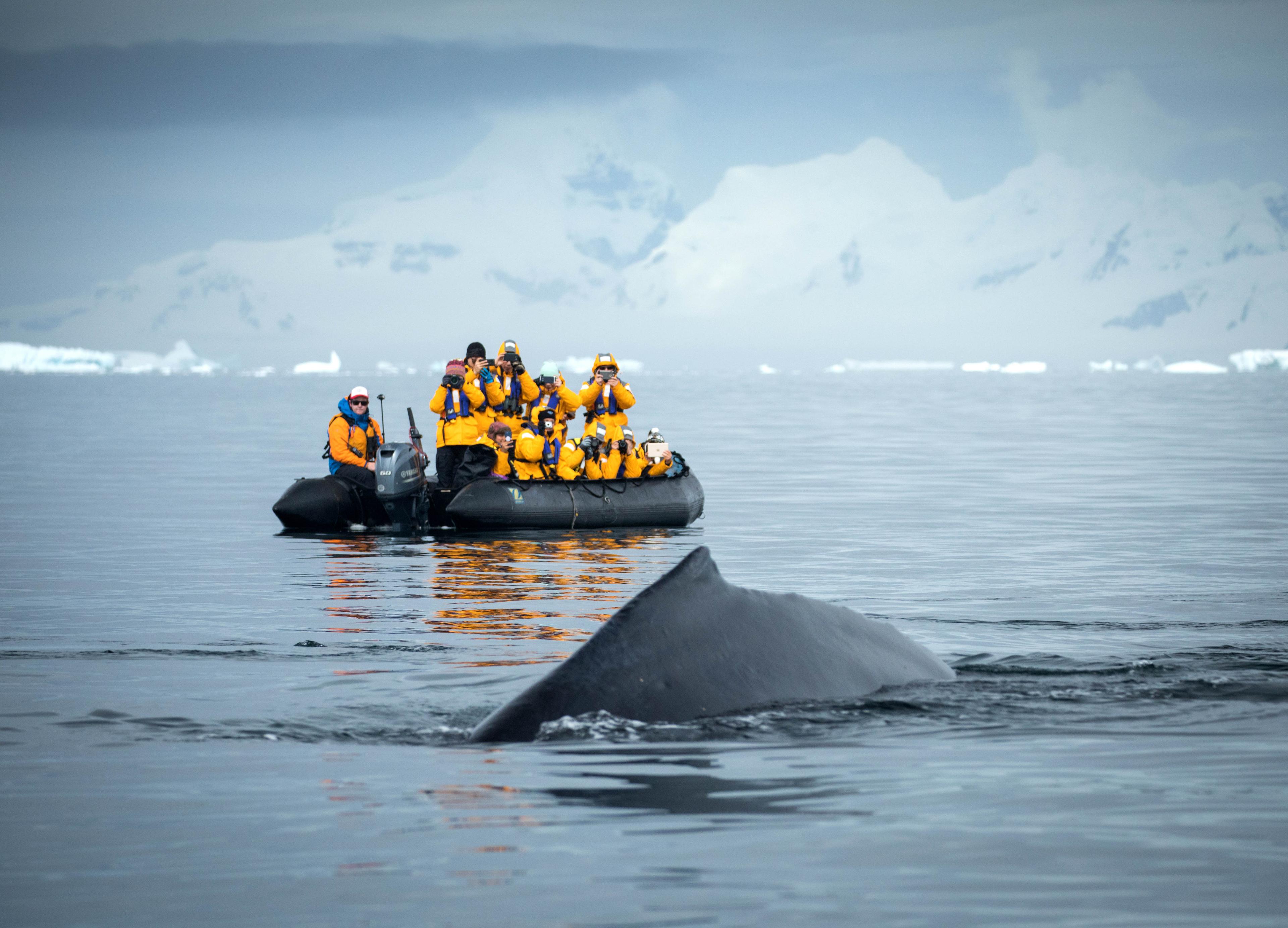Antarctica is cold, right? Well, perhaps not as cold as you’re imagining. You’re likely visiting in the Antarctic summer, between late October and early March, when most days are above 35 degrees Fahrenheit (2 degrees Celsius). (That’s not nearly as cold as a typical Ontario winter!) The coldest you’ll probably get is when zipping to and from shore via Zodiac, or on the ship when it’s cold and windy and you’re approaching the Antarctic Peninsula - the blowing seaspray and wind can be unpleasant if you’re not dressed appropriately. On shore, you’ll be fairly sheltered from wind and walking quite a bit, so you’ll warm up naturally - unless it’s October or November, you may not even always need a down jacket.
The lesson here? When you’re bound for Antarctica, the trick is to pack layers - and a lot of them. Then, no matter the wind chill, the sea spray or the air temperature, you’ll be in comfortable shape to enjoy your incredible surroundings.
It’s all about dressing appropriately and the layering, so here you go: the ultimate Antarctica packing list:
Essentials:
- Quality waterproof outer layers, including waterproof and windproof jacket and pants. Look for a thin enough style to be worn over other layers, like fleece, and a high collar to protect your neck. (Many expeditions will give you an appropriate jacket so you may not need to bring your own)
- Layers, and more layers. Skip the bulky tops and pack a variety of thermal and nonthermal short- and long-sleeved wool tops. Avoid cotton and polyester. You’ll always want to wear waterproof pants when leaving the ship for your Zodiac transport or tour, so make sure you have something comfortable and warm to wear underneath them. Thin thermal pants are perfect. A fleece zip-up jacket will keep the chill off underneath your waterproof jacket.
- Sock, and more socks. Include both thick, wooly, thermal socks and some everyday socks for onboard the ship. Silk-lining socks go well under outer socks made of merino wool, nylon or organic fibers.
- A tight, warm hat that won’t blow off in the wind (consider adding a wool scarf or buff, too)
- Appropriate comfortable shoes for walking around the ship (on deck and inside). If going to the Falkland Islands, you are allowed to wear your own footwear. While running shoes will work; hiking boots are better.
- Wraparound, UV-protected sunglasses, as well as broad-spectrum sunscreen and lip balm
- Two pairs of gloves: one waterproof pair for shore visits and a thinner, not-necessarily-waterproof pair to use as an inner layer or for when you’re taking photos
- Moisturizer to combat the dry, windy conditions, as well as regular toiletries
- Regular medication
- A waterproof daypack
- Chargers and adapters for phones and rechargeable batteries.
Nice-to-Haves:
- A book or e-reader, music and podcasts on a smartphone, crossword puzzles, etc.
- Noise-cancelling headphones
- Journal or notebook to record your shore visits and what you learn from onboard naturalists and experts
- Reusable water bottle (These are often provided by your cruise ship)
- Camera, extra batteries and SD cards
- Wet bags and waterproof cases for electronics
- Binoculars
- A little cash and a credit card. (You can buy stamps and postcards in Port Stanley (Falkland Islands) and on the Antarctic Peninsula so make sure you have enough cash (at least $5 per postcard with stamp))
- Earplugs
- Motion illness medication such as the scopolamine transdermal patch
- Comfortable, casual clothing for onboard
- Bathing suit for spa or hot tub and a swim cap if you might partake in a polar plunge
NOTE: If you are considering a fly/cruise option, you will be limited to 20 kg of weight for all luggage and personal items. Camera gear, on your person (i.e., stuffed in your jacket pockets) will not count towards this weight limit.
What you Need Not Bring:
- Walking sticks - your expedition team will have walking sticks available for your use.
- Waterproof boots - your ship will provide you with muck boots for shore excursions. You are not allowed to wear your own footwear.
- Waterproof jacket -most expeditions will provide you with a waterproof jacket. Your travel advisor can confirm if this is the case.
- Refillable water bottle - most expeditions will provide you with a refillable bottle. Plastic water bottles are generally not used on small-ship expeditions. Again, your travel advisor can confirm.

